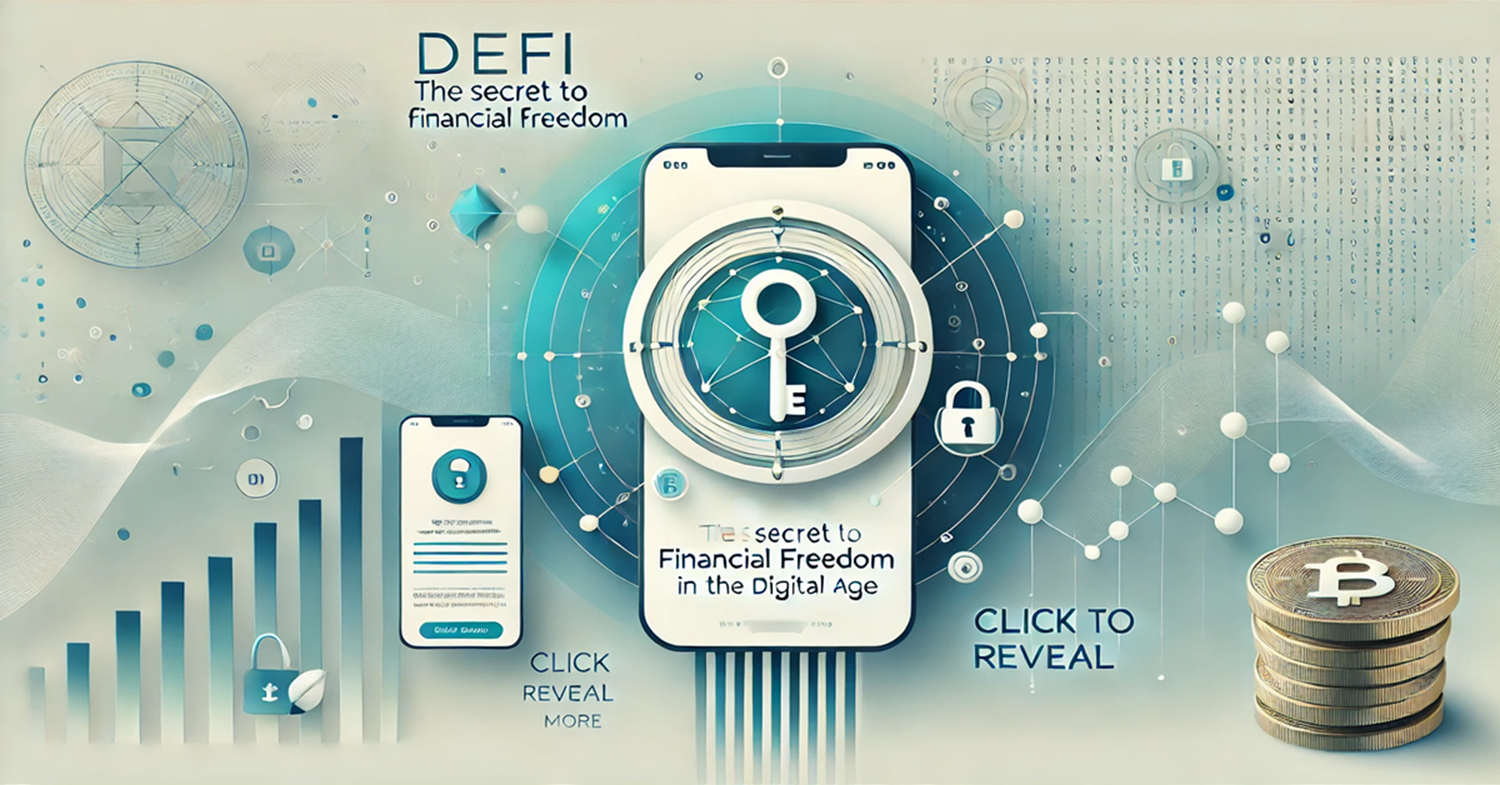Understanding DeFi and Its Impact
DeFi or Decentralized Finance emerged as one of the most transformative innovations of the financial sector. Leaning on blockchain technology, DeFi seeks to make finance accessible to everyone through people-to-people transactions that eliminate middlemen. This blog explores the intricacies of Decentralized Finance, its benefits, challenges, and potential to transform traditional financial systems.
What is Decentralized Finance (DeFi)?
Decentralized Finance refers to a system where financial products and services are available on a public decentralized blockchain network, making them open to anyone to use, rather than through intermediaries like banks or brokerages. Unlike traditional finance, Decentralized Finance platforms are not controlled by a central authority, making them more resilient to censorship and control.
- Open Source: DeFi platforms are built on open-source software, allowing anyone to inspect, modify, and enhance the code.
- Transparency: All transactions are recorded on a public blockchain, ensuring transparency and traceability.
- Permissionless: Anyone with an internet connection can access Decentralized Finance services without the need for approval from a central authority.
- Interoperability: Decentralized Finance applications are designed to work together seamlessly, creating a more integrated financial ecosystem.
The Growth and Evolution of DeFi
The DeFi ecosystem has grown exponentially over the past few years, with the total value locked (TVL) in Decentralized Finance protocols surpassing \$100 billion in 2023. This growth is driven by several factors, including:
- Increased adoption of cryptocurrencies
- Technological advancements
- Regulatory scrutiny
Milestones in Decentralized Finance Evolution:
- 2017: The launch of MakerDAO, one of the first DeFi platforms, which introduced the concept of decentralized stablecoins.
- 2020: The “Decentralized Finance Summer” saw a surge in the popularity of yield farming and liquidity mining, with platforms like Compound and Aave gaining significant traction.
- 2021: The rise of decentralized exchanges (DEXs) like Uniswap and SushiSwap, which offer peer-to-peer trading without intermediaries.
Benefits of DeFi
DeFi offers several advantages over traditional financial systems, making it an attractive option for users worldwide.
- Accessibility and Inclusivity: Decentralized Finance platforms are accessible to anyone with an internet connection, regardless of location or financial status.
- Transparency and Security: All transactions on DeFi platforms are recorded on a public blockchain, ensuring transparency and reducing the risk of fraud.
- Lower Costs: By eliminating intermediaries, DeFi platforms can offer financial services at a fraction of the cost of traditional financial institutions.
- Innovation and Flexibility: Decentralized Finance platforms are highly innovative, offering a wide range of financial products and services, including lending, borrowing, trading, and insurance.
Challenges and Risks of DeFi
Despite its numerous benefits, Decentralized Finance also faces several challenges and risks that need to be addressed to ensure its long-term success.
- Regulatory Uncertainty: The regulatory landscape for Decentralized Finance is still evolving, with many jurisdictions yet to establish clear guidelines.
- Security Vulnerabilities: While blockchain technology is inherently secure, DeFi platforms are not immune to security breaches.
- Scalability Issues: The current blockchain infrastructure faces scalability challenges, with many networks struggling to handle the high transaction volumes required for widespread Decentralized Finance adoption.
- User Experience: The complexity of DeFi platforms can be daunting for new users, with many requiring a steep learning curve.
The Future of Decentralized Finance: Opportunities and Predictions
As DeFi continues to evolve, several trends and opportunities are likely to shape its future.
- Integration with Traditional Finance: The integration of Decentralized Finance with traditional financial systems could lead to the creation of hybrid models that combine the benefits of both worlds.
- Expansion of DeFi Services: The range of DeFi services is expected to expand, with new products and applications being developed to meet the diverse needs of users.
- Enhanced Security Measures: As Decentralized Finance platforms become more popular, there will be a greater emphasis on security.
- Regulatory Clarity: As regulatory bodies around the world begin to establish clearer guidelines for DeFi, this could lead to increased trust and adoption.
Table: Comparison of DeFi and Traditional Finance
| Feature | DeFi | Traditional Finance |
|---|---|---|
| Control | Decentralized, no central authority | Centralized, controlled by institutions |
| Transparency | High, all transactions recorded on the blockchain | Low, transactions are private |
| Accessibility | Open to anyone with internet access | Restricted, requires approval from institutions |
| Cost | Lower fees due to no intermediaries | Higher fees due to intermediaries |
| Innovation | High, rapid development of new products | Slower, more regulated |
| Security | Vulnerable to smart contract risks | Vulnerable to fraud and hacking |
Informational Block: Key DeFi Platforms
– MakerDAO: A decentralized credit platform that supports the creation of DAI, a stablecoin pegged to the US dollar.
– Compound: A lending and borrowing platform that allows users to earn interest on their crypto assets.
– Uniswap: A decentralized exchange that enables peer-to-peer trading of cryptocurrencies.
– Aave: A decentralized lending platform that offers flash loans and other innovative financial products.
– Yearn.finance: A yield aggregator that automatically moves users’ funds between different Decentralized Finance protocols to maximize returns.
Conclusion: Embracing the Decentralized Finance Revolution
Decentralized Finance marks a new epoch in how we perceive and interact with financial systems. Blockchain technology has the potential to democratize finance, improve transparency, and reduce costs, making it a powerful enabler of empowering individuals and businesses globally. That said, like any new technology, Decentralized Finance comes with its risks, and it is important to keep abreast of the latest novelties and warnings.
With Decentralized Finance growing, it’ll be interesting to watch how it meshes with traditional finance and responds to the shifting regulatory landscape. But one thing is sure, Decentralized Finance is here for a long and it will greatly affect the finance world.

FAQ
What is the difference between DeFi and CeFi (Centralized Finance)?
DeFi platforms are decentralized and operate without intermediaries, while CeFi platforms are controlled by central authorities, such as banks or financial institutions.
How can I get started with DeFi?
To get started with Decentralized Finance, you need to set up a cryptocurrency wallet, acquire some crypto assets, and connect to a Decentralized Finance platform. It’s important to do thorough research and understand the risks involved.
What are the risks associated with DeFi?
The main risks include smart contract vulnerabilities, hacking, regulatory uncertainty, and market volatility. Users should exercise caution and only invest what they can afford to lose.
Can I earn interest on my crypto assets with Decentralized Finance?
Yes, many Decentralized Finance platforms offer lending and borrowing services that allow users to earn interest on their crypto assets. However, it’s crucial to understand the terms and conditions and the associated risks.
Is DeFi regulated?
The regulatory landscape for Decentralized Finance is still evolving. While some jurisdictions are beginning to establish guidelines, many aspects of Decentralized Finance remain unregulated.
